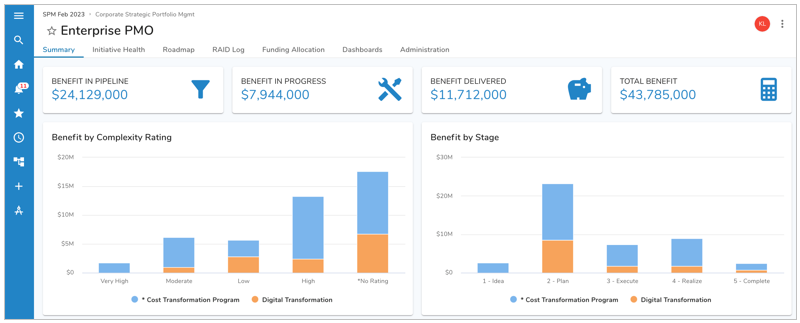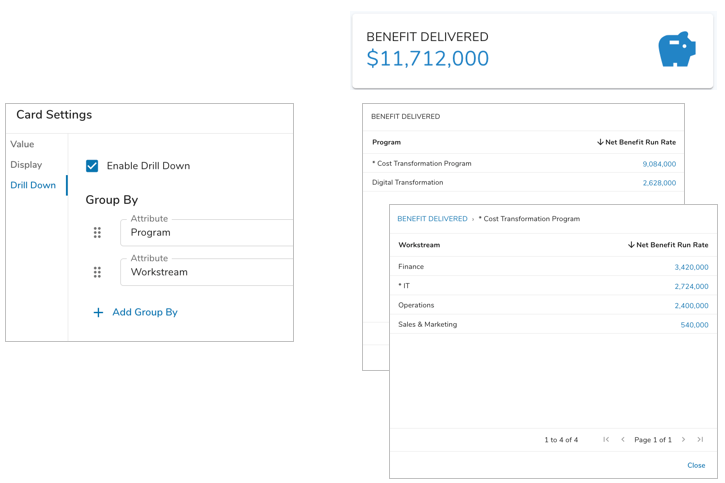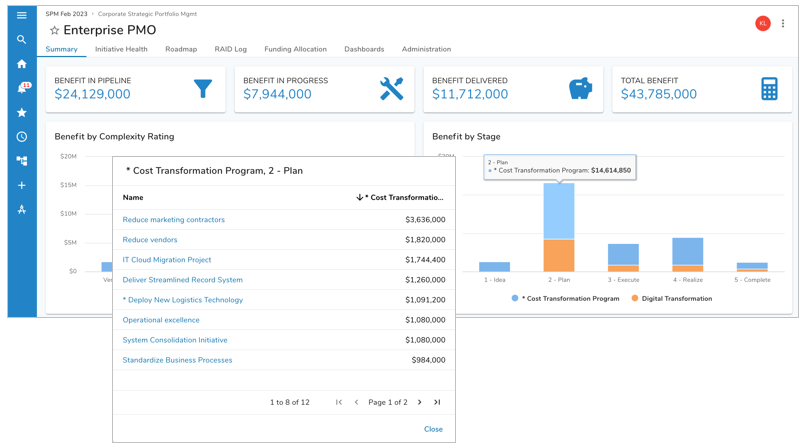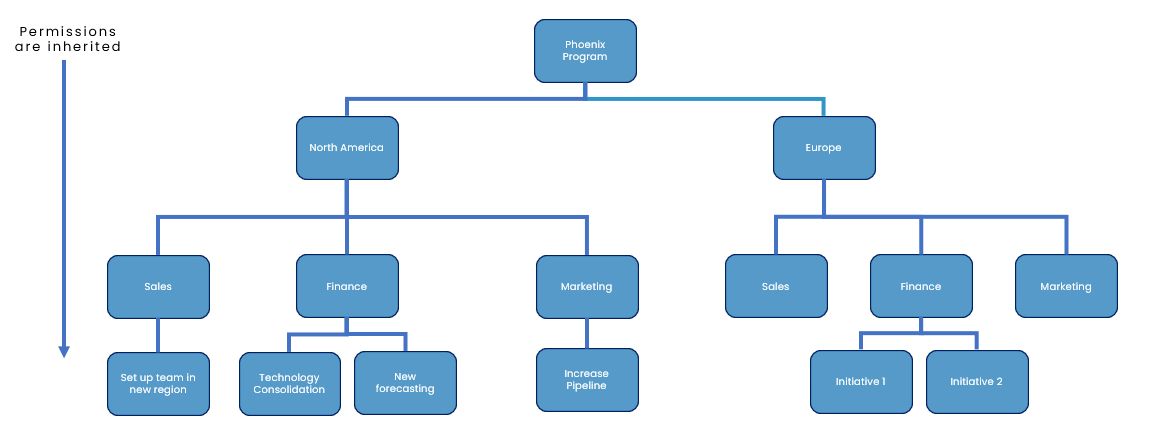Overview
An often-shared Bill Gates quote:
Bringing together the right information with the right people will dramatically improve a company’s ability to develop and act on strategic business opportunities.
is a great introduction for this quarter’s Shibumi newsletter. Arming the “right people” with the “right information” allows them to make the “right decisions”. This concept is foundational in all Shibumi solutions. Said simply, Shibumi solutions provide information that help organizational leadership make decisions that increase the likelihood of success for their strategic programs.
In this edition, we will highlight two new platform product enhancements that align to having the “right information” provided to the “right people”.
The right information: Drill Down from Chart & Card Sections
A key capability of Shibumi is to aggregate values in real-time from many programs containing a large volume of initiatives. The aggregated values impact strategic decision-making (e.g., which programs should the organization invest more heavily in? Which programs should the organization stop?)
A best practice technique for showing aggregated data in Shibumi is by using Card sections. Card sections display a count or aggregated value and are often included on dashboard or on summary layouts within a solution.
Another frequently applied technique for communicating aggregated values is with Pie Chart or Chart sections. The Pie Chart and Chart custom sections can be used to present a variety of chart types (e.g., pie, donut, column, bar, line, area, etc.) and can visually group content for qukc understanding.
The screen shot below includes Card sections horizontally at the top of the layout with Chart sections directly below the Card sections.

While the real-time aggregated values are incredibly useful, a commonly requested enhancement has been to provide drill down so that users can better understand the detail behind aggregations.
We are excited to announce that drill down is now available for the Card, Pie Chart, and Chart sections!
Configure the Card section to support drill down by selecting the “Enable Drill Down” option on the Settings window. When published, users can click on the value displayed on the Card to see the list of work items contributing to the Card’s aggregated value.
Optionally, App Admins can define aggregation groups. On the Settings window, add one or more Group By attributes. After publish. when users click on the value displayed on the Card, Shibumi will display the next level of aggregation as defined by the Group By settings. When the last group is reached, Shibumi will display a list of work items.

For the Pie Chart and Chart sections, toggle on the drill down capability simply by selecting the “Enable Drill Down” option on the Settings window. After publishing, when a user clicks on a “slice” in the Chart, the work items contributing to the value represented by the slice will be displayed.

For more Drill Down configuration information, please refer to the following articles on our support site.
The right people: Program Participants can hold Multiple Roles
Equally as important as providing the right information is making sure the right people, and sometimes only those people, see the information.
A key concept in Shibumi is that permissions are inherited downwards. A user assigned to a role on a work item at the top of a Program would have access to all descendent work items while a user assigned to a role on a specific functional Initiative would only see that Initiative.

This inheritance approach works well and minimizes the administration related to granting and revoking permissions to individual work items. However, a previous contraint of Shibumi roles was that a user could only hold one role per work item.
App Admins often take advantage of roles assignments to define behavior on a work item. For example, the ability to see a Finance tab or to edit the Anticipated Total Benefit fields might be restricted to only those users holding the Finance role and the ability to approve a Project through a stage gate might be restricted to those users holding the Project Manager role.
For most projects this logic doesn’t collide but when the Project Manager is on the Finance team, the expectation would be that this person would be able to both edit the Anticipated Total Benefit field and approve the project through the Stage Gate.
With the single role per work item contraint, addressing this scenario was challenging scenario and required assessing roles held on ancestor items.
Now, it’s much easier! We have enhanced Shibumi roles to allow a user to hold multiple roles on a work item. When appropriate, behavior logic can still factor in role assignments on ancestor items but that is no longer the only way to address scenarios where a user may have multiple responsibilities on a project.
This enhancement makes it easier to ensure the right people have access to the right information!
For additional detail about Shibumi roles, please refer to the Roles & User Management article on our support site.
